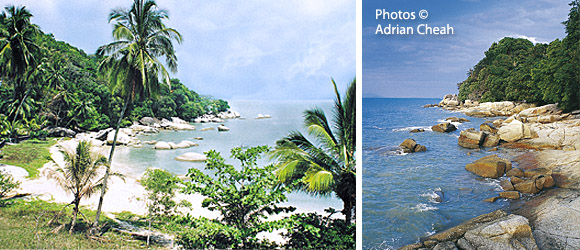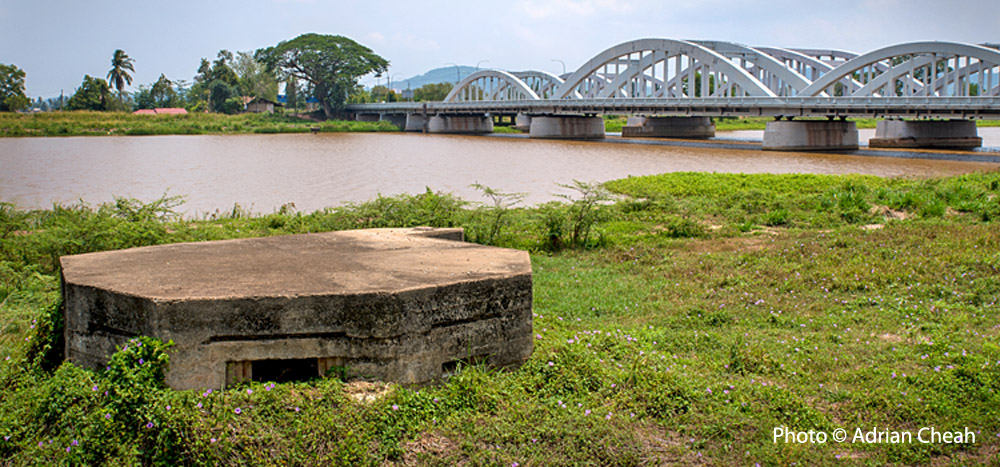Kuala Muda fishing village and whispering market
Where fisher folk keep alive a most quaint and unusual tradition of bidding

The political boundary between the states of Penang and Kedah is partly defined by a majestic age-old gift of nature. This is the magnificent Sungai Muda river which meanders quietly but imposingly from the Ulu Muda rainforests deep in the interior of peninsular Malaysia towards the Straits of Malacca.
Continue Reading
KTM Swing Bridge in Prai – a rare engineering novelty in Asia
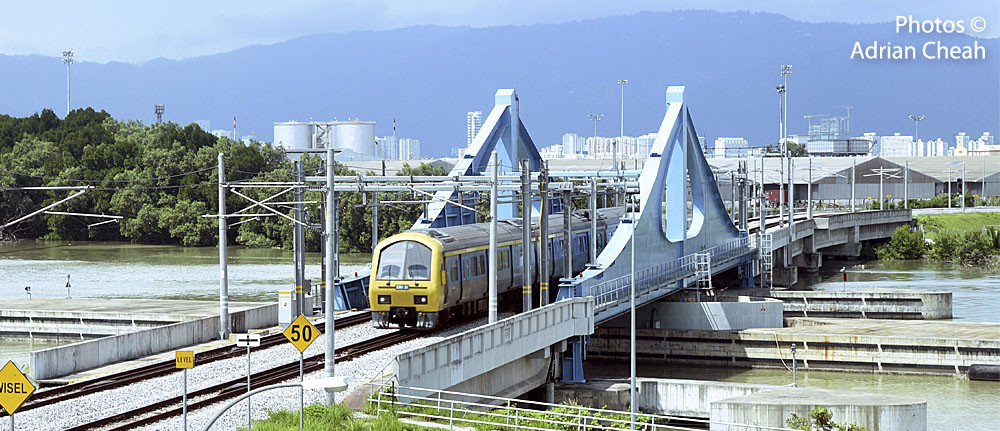
A marvel of engineering, this “swing bridge” is built over the Prai River specifically to allow trains to cross over, connecting the Butterworth Railway Terminal on the northern side to other rail destinations further south in Malaysia. The bridge also opens up occasionally for large barges, ships and ferries that need to pass through along the river. It is operated by Keretapi Tanah Melayu (KTM), the national railway company.
Continue Reading
The surreal vistas of Bukit Katak (Frog Hill)
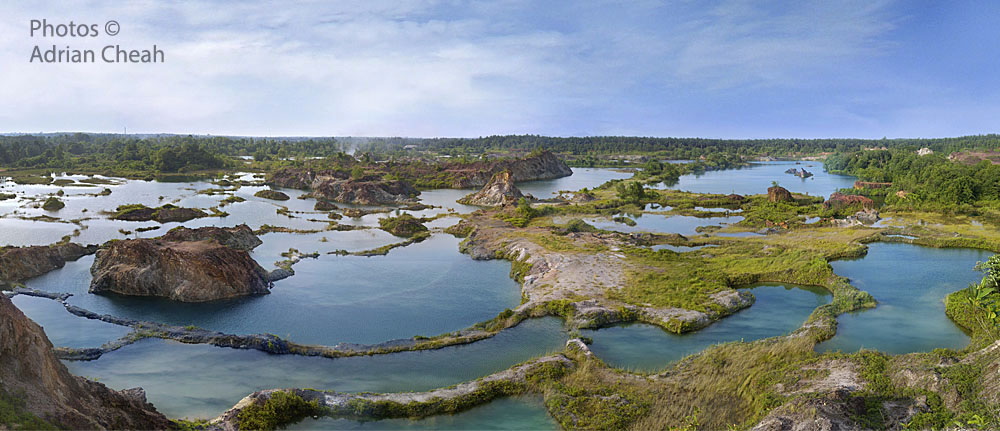
Jim Richardson once noted that if you want to be a better photographer, "you should stand in front of more interesting stuff". Richardson is a renowned photographer for the National Geographic Magazine. Many would agree with Richardson and with the advent of social media, it is easy to turn an unknown location like Bukit Katak (Frog Hill) into one of Penang's much sought after Instagrammable hotspots.
Continue Reading
Penang Bird Park – a living sanctuary that houses and protects more than 300 species of birds

When it opened in 1988, the Penang Bird Park was the first man-made bird sanctuary of its kind in Malaysia. Comfortably nestled in a sheltered corner in urban Seberang Jaya, it features some 3,000 birds, consisting of more than 300 local and foreign species.
Continue Reading
Penang Bridge – connecting the island to the mainland
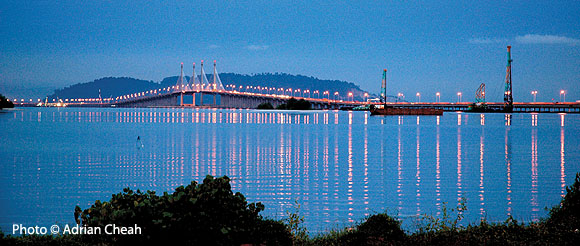
Before 1985, transportation between the island and the mainland was solely dependent on the state-owned Penang Ferry Service that plies between Butterworth and George Town. For using the ferry services in Penang, motorists need to pay toll fare while heading to the island. There is no charge for leaving the island.
Continue Reading
Penang ferry service
The famous heritage ride across the Penang Channel

Probably the most cherished and well-known icon of Penang, this ferry service which carries motor vehicles and foot passengers became operational in 1925, linking Butterworth on the mainland to George Town on the island. Prior to that, the ferries in the form of large boats were meant for goods and people only.
Continue Reading
The elegant Nyonya kebaya – wearable art that knows no seasons
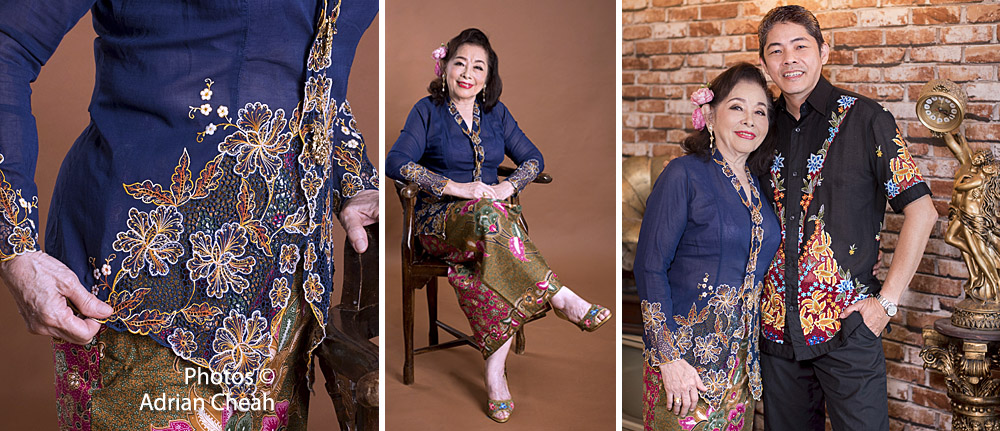
"When in Rome, do as the Romans do." This oft-quoted adage champions the virtues of adaptation. Whether or not the early Chinese immigrants to Malay Archipelago were familiar with this nugget of wisdom, their actions mirrored its essence. These enterprising settlers, who journeyed to these lands in search of opportunity, not only carved out new lives but also intertwined their heritage with local traditions. Some married Malays and embraced elements of their customs while steadfastly preserving their Chinese beliefs and philosophies. From this union arose the Chinese Peranakan community – also known as Babas and Nyonyas – a vibrant cultural fusion renowned for its distinctive charm and ingenuity.
Continue Reading
The Sari: Queen of garments

The amazingly versatile sari (or saree) transcends mere fabric – it embodies the rich heritage of traditional South Asia women (and a few men) in countries such as India, Pakistan, Bangladesh, Sri Lanka and Nepal. It is also a garment that covers all, yet is revealing, enchanting yet unassuming, serene yet sensuous. The sari, with its six yards or more of artistry, is a masterpiece of contradictions, seamlessly transitioning from workwear to leisure attire to a symbol of opulence, all within its elegant drapes.
Continue Reading
History of Little India

This meticulously regimented network was among the earliest parts of George Town planned under the administration of Sir Francis Light, the English founder of Penang. The area is hence now referred to as the "Francis Light Grid" – a rectangular network bordered by Leith Street, Beach Street, Chulia Street and Pitt Street (now Jalan Masjid Kapitan Keling).
Continue Reading
"Looking After the Ashes" – unravelling the enigmatic Chinese Peranakan world of taboos and traditions
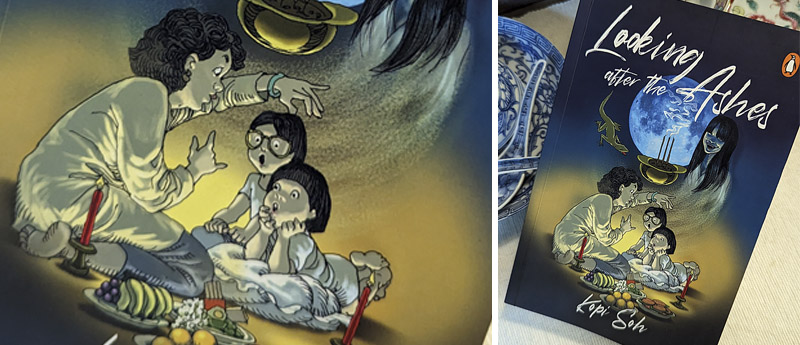
I usually stay away from horror stories, especially those that have blood and gore plastered all over the cover. I know that one should never judge a book by its cover. However having been an art director for more than three decades, I feel that a cover has to set the right tone and sell the book. The cover of "Looking After the Ashes" by Kopi Soh shows two wide-eyed kids, enchanted by the storyteller, enveloped with an eerie atmosphere. Picking up the book, I would not have been able to anticipate that it would be a page-turner for me.
Continue Reading







